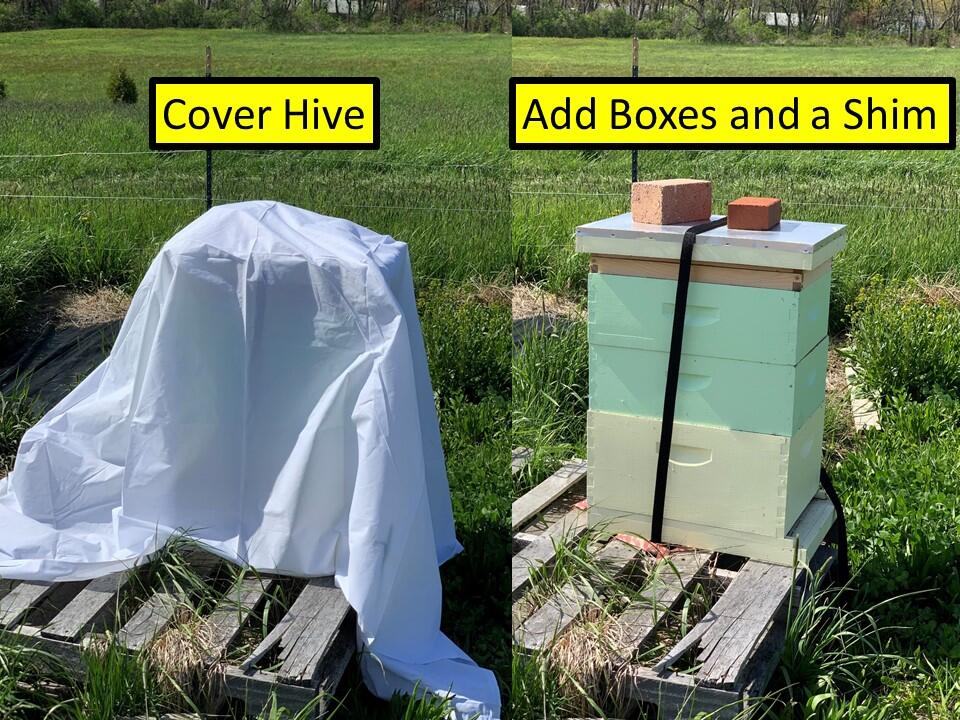1. When and where will aerial and ground sprays occur?
Aerial and ground sprays are planned during night-time hours to best target active mosquitoes. To determine statewide spray activity consult this map. The map will be updated daily to reflect what areas have been sprayed. Spray areas may change due to weather conditions or other factors that affect aircraft flight.
2. Will my area still be sprayed if I submitted an exclusion request?
Aerial and ground sprays occur in response to a public health threat of Eastern Equine Encephalitis (EEE) virus. Individuals that have submitted exclusion requests will not be excluded from aerial sprays.
3. Should I take precautions to protect honey bee hives during aerial and ground sprays?
The Department does not anticipate negative impacts on honey bee colonies based on past aerial mosquito adulticide applications monitoring reports, for further details see the 2019 Honey Bee Monitoring Report, 2020 Honey Bee Monitoring Report, and the 2024 Honey Bee Monitoring Report. Aerial and ground sprays will take place at night, minimizing direct exposure to foraging honey bees. If you are concerned about the potential for negative impacts from spraying, consider these recommendations:
- Move hives. Consider physically relocating hives to a different apiary location outside the spray area and then back to the original apiary location after the spray is completed. Check out How to Move Bee Hives, Safely by BetterBee. Note this precaution may not be practical or possible for all hive types.
- Cover hives. Consider placing a cloth (burlap, canvas, muslin, cotton sheet, etc.) covering over the entire hive for the duration of an aerial spray to prevent bees from exiting, thus preventing direct contact with the sprayed mosquito adulticides. To apply a hive covering, simply drape a loose, wet cloth over the entire hive at dusk or close to dark prior to aerial spraying. Then swiftly remove the covering the morning after the aerial spraying to allow the hive to forage normally. Note that hive coverings can negatively impact honey bees by causing overheating due to poor ventilation if not applied properly or removed quickly following aerial spraying.
- Add boxes and a shim. Consider adding additional hive boxes and a shim during the aerial spraying, to increase the amount of space for bees to congregate inside the box and increase ventilation within the hive. This is an ideal option for apiaries with bees that are expected to or currently congregating or clustering (i.e. bearding) on the exterior of hive boxes. To add boxes and a shim, simply place a few (i.e. 1-2) un-occupied hive boxes and a shim on the top of the current hive setup prior to aerial spraying. Then remove the additional boxes and shim following the spray.
4. Should I take precautions if miticides are in my honey bee hives during aerial and ground sprays?
If honey bees are congregating on the outside of hive boxes due to the installation of active miticides in hives, consider the suggestions for Adding boxes in Question 3 above.
5. Should I be concerned about foraging honey bees coming into contact with residues on flowers or water sources after the aerial and ground sprays?
The product being applied has a very short half-life (one day) and breaks down rapidly in sunlight. The Department has conducted monitoring of honey bee hives during similar past applications and has not witnessed any negative effects on honey bees from the use of this product.
6. How do I report honey bee mortality after the aerial and ground spraying?
To report signs of acute honey bee mortality (defined as larger than normal quantities of dead or dying bees at the entrance or inside hives) after an aerial spray, contact the Apiary Program Message Line as soon as possible by phone 508-281-6784 or email bees@mass.gov. An Apiary Inspector will follow up on your request.
7. Does the state monitor honey bee health during aerial and ground spraying?
The Department monitors honey bee hives prior to, during and after spraying using a protocol outlined in the State Reclamation and Mosquito Control Board's Massachusetts Emergency Operations Response Plan for Mosquito-Borne Illness. Honey bee hives are selected for monitoring based on their geographic location and health.
8. Where can I learn more about aerial and ground spraying as it relates to honey bee health?
Visit this DPH website for additional, up to date information on aerial and ground spraying. If you have specific questions related to honey bee health, contact the Apiary Program Message Line by phone 508-281-6784 or email bees@mass.gov.
